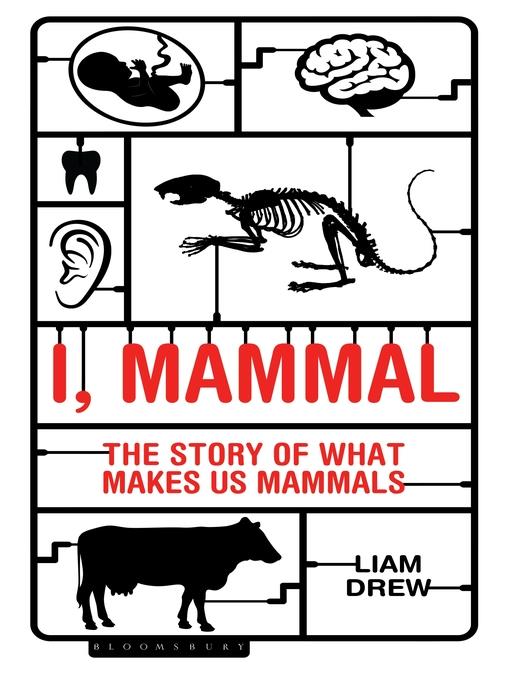
I, Mammal
The Story of What Makes Us Mammals
کتاب های مرتبط
- اطلاعات
- نقد و بررسی
- دیدگاه کاربران
نقد و بررسی

December 1, 2017
Drew, a former neurobiologist, presents the concept of human as mammal in this entertaining and highly readable book. He discusses the traits that, in combination, define mammals--hair and fur, mammary glands, single-boned lower jaws, the three bones of the middle ear, warm-bloodedness, diaphragms, and four-chambered hearts--and how they evolved. The author emphasizes that none of these traits evolved in a vacuum but rather influenced one another over millions of years. Mammalian evolution was also shaped by the creatures with which early mammals shared the planet for 145 million years: dinosaurs. There is an explanation of how the protomammals, synapsids, and therapsids eventually gave way to the platypus, the egg-layer that still exists on the very edge of mammaldom. He also shows how humans fit into the mammalian family ("just an entry towards the end of the primate section") and how we evolved into the form we inhabit today. VERDICT Drew cites extensive research but maintains a conversational tone throughout; a combination that will appeal to both scientists and casual readers. Recommended for academic and public libraries.--Rachel Owens, Daytona State Coll. Lib., FL
Copyright 2017 Library Journal, LLC Used with permission.

November 6, 2017
With wit and passion, Drew, a freelance writer and former neurobiologist, explores what it means to be a mammal by taking an evolutionary look at how and where mammals arose. He discusses such topics as the origin of lactation, the nature of the placenta, the evolution of warm-bloodedness, and the characteristics of the mammalian brain. He makes clear that none of these traits arose in isolation: “Individual traits can be meaningfully defined and studied in isolation, but such an approach should never blind us to the fact that every trait is a part of a greater whole.” Throughout, Drew describes organismal evolution as a multifaceted process that is difficult but not impossible to study. He presents the results of current research and offers competing hypotheses to explain many of the developmental and behavioral patterns observed. Drew vividly conveys the excitement of scientific discovery, reminding readers that there is much yet to be uncovered. He combines detailed technical information with interesting natural-history tidbits, such as that “marsupials have three vaginas—two for letting sperm in, and one for letting their joeys out.” He also niftily connects his personal experiences of fatherhood to the broader issue of animal reproduction. There’s much here to be savored by scientists and nonscientists alike.

November 15, 2017
A tale of scrotality and other pressing mammalian concerns.A neurobiologist by training, science writer Drew relates that some time ago, he got it in his head that readers might enjoy "a lengthy discussion of the natural history of scrotums," and all that remained was to find an editor who agreed with him. After some rejections, he did, first for a magazine and then for this book, which indeed includes, among other things, a lengthy discussion of the natural history of scrotums--perhaps too lengthy. The author explores other mammalian matters, of course, among them the fact that there are not so many kinds of mammals in the world once one discounts bats and rodents: by his reckoning, 1,687 species. As Drew writes, "rats, mice, voles, squirrels, chipmunks, gerbils, guinea pigs and their kin accout for just over 40 percent of all mammals." And, the subject being mammals, mammaries naturally enter into the narrative, and the author connects their evolution to the triad of apocrine gland, sebaceous gland, and hair follicle. Readers may be delighted to learn, finally, that the egg indeed preceded the chicken, although "biologists are at a bit of a loss as to why the egg evolved." Drew's account is doggedly Darwinian, allowing for modern interpretations of things like clades and radiative adaptations, and his argument often proceeds from technical fine points. "Might the evolution of a key trait," he asks, "have given therapsids, say, an edge over pelycosaurs? Did a uniquely mammalian character allow mammals to succeed cynodonts?" The answer is an elusive yes and no, but the ability to entertain contending possibilities is another thing that makes us human--i.e., mammalian with a few more folds of the cortex, descended testicles, a constant body temperature, and such.A solid and demanding account, one best read after some grounding in current evolutionary and biological theories.
COPYRIGHT(2017) Kirkus Reviews, ALL RIGHTS RESERVED.

























دیدگاه کاربران